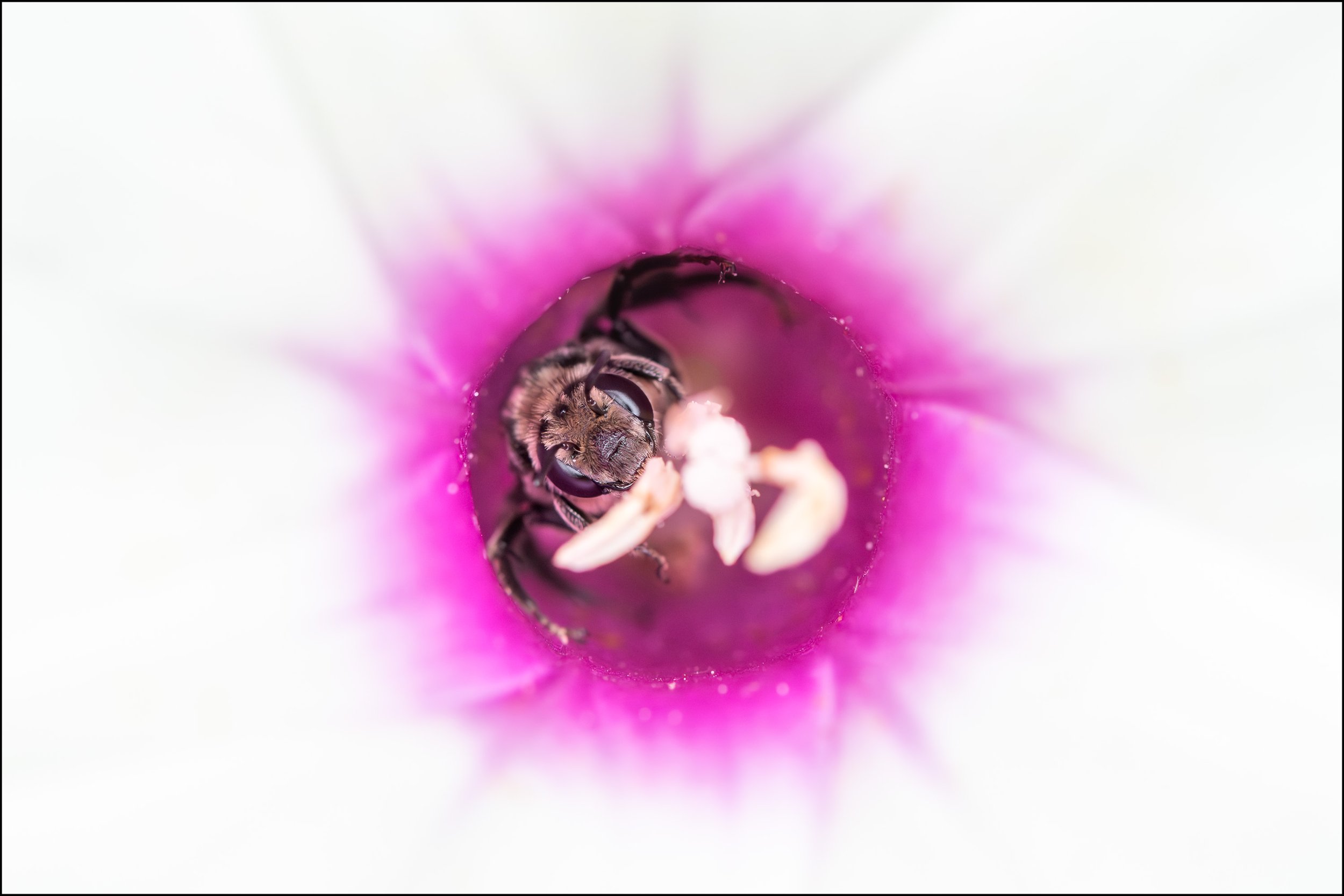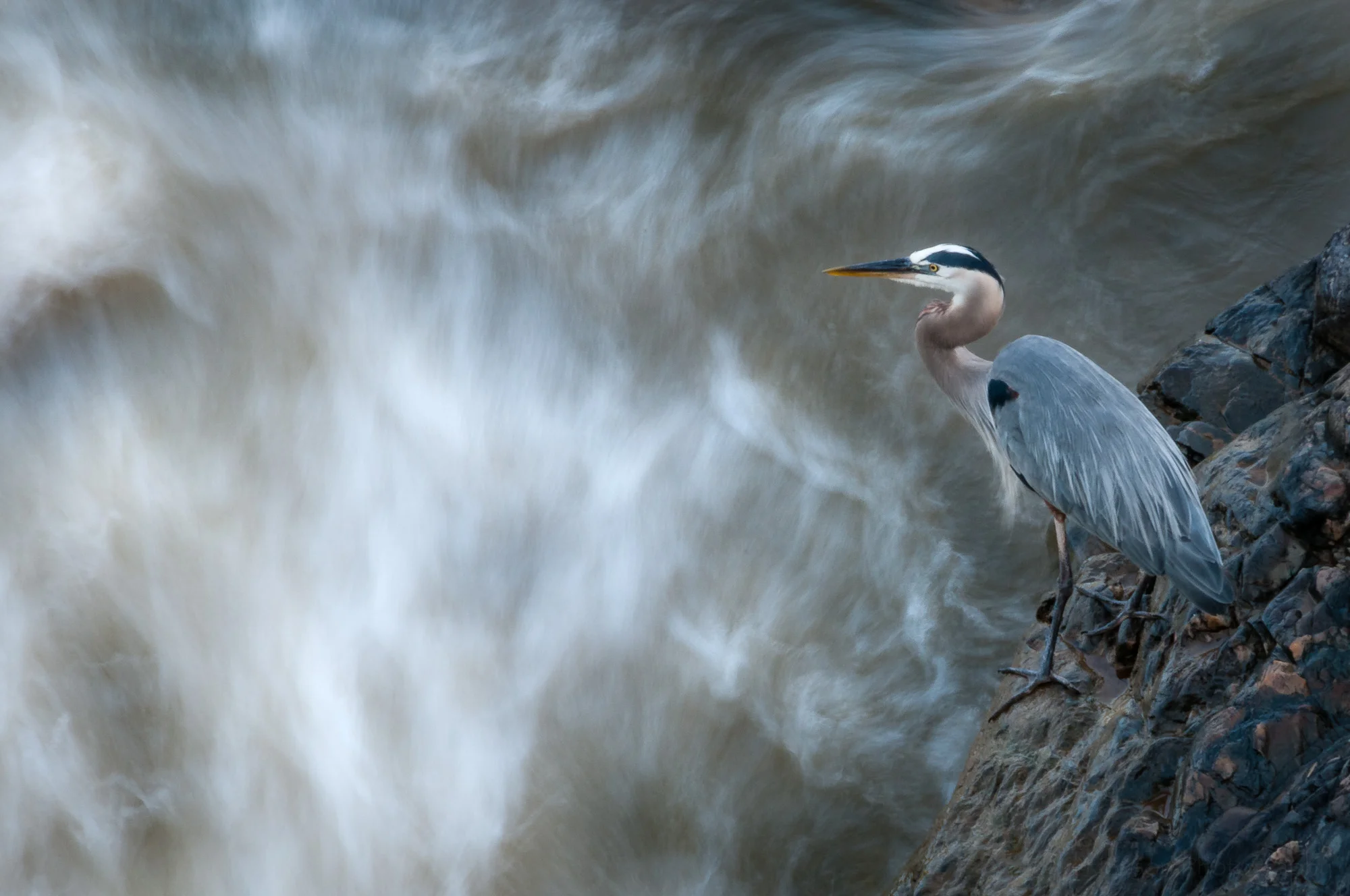A visitor to the wild potato vine.
In mid-July my father and I walked around the shoreline trail of Occoquan Bay National Wildlife Refuge. I’m often drawn to the various flowers, many of which look very similar. In this case we found what I believe was a wild potato vine (Ipomoea pandurata), a member of the morning glory family, with their beautiful white flowers and deep pink interior.
As I was attempting to find a decent view of a flower an insect, I believe some kind of bee, flew right into the one I was looking at. I then focused all my attention on that flower, getting as close as I could and attempting to see into the dark interior of the flower. The insect had flown in head first but by the time I had my camera positioned it had turned itself around and was facing me. I’ve photographed insects like this a few times and always enjoy the view it presents. Notice how the insect has its legs splayed out pushing against the flower to position itself.
Below is a slightly wider view to show the flower with the vines and leaves, and if you look closely, the tail end of the insect.
A wider view of the wild potato vine flower with the bee inside.
Tech Talk
For those technically inclined, I was photographing with my 105mm macro lens. It was an overcast day so I had my ISO up a bit to better see into the darker regions and still keep a high enough shutter speed for me to handhold.
For the wider view I used an ISO of 800, an aperture of f/6.3 and a shutter speed of 1/640. These were general middle-of-the-road settings while I was exploring the scene.
When I moved closer to see inside the flower it might have made sense to raise the ISO to better see the much darker region, but I didn’t think of that and was working fast before the insect left the flower, so I stayed at ISO 800. I was much closer to the subject so I had the foresight to stop down my aperture to f/9 to try to get more of the insect and interior in focus. The closer you get the shallower the depth of field. Stopping down the aperture helps get a wider depth of field with more in focus, and at this close range the depth of field is very small even with smaller apertures. But stopping down the aperture requires a slower shutter speed (ah, physics!), in this case 1/320 second, which I hoped was still fast enough for a sharp image.
In the end I’m pleased with how it turned out.
Do you enjoy these posts?
Sign up to receive periodic emails with updates and thoughts. Don’t worry, I won’t spam you. And please consider purchasing artwork or products from my online store, and using my affiliate links in the sidebar to the right when shopping online.
I appreciate your support!



























